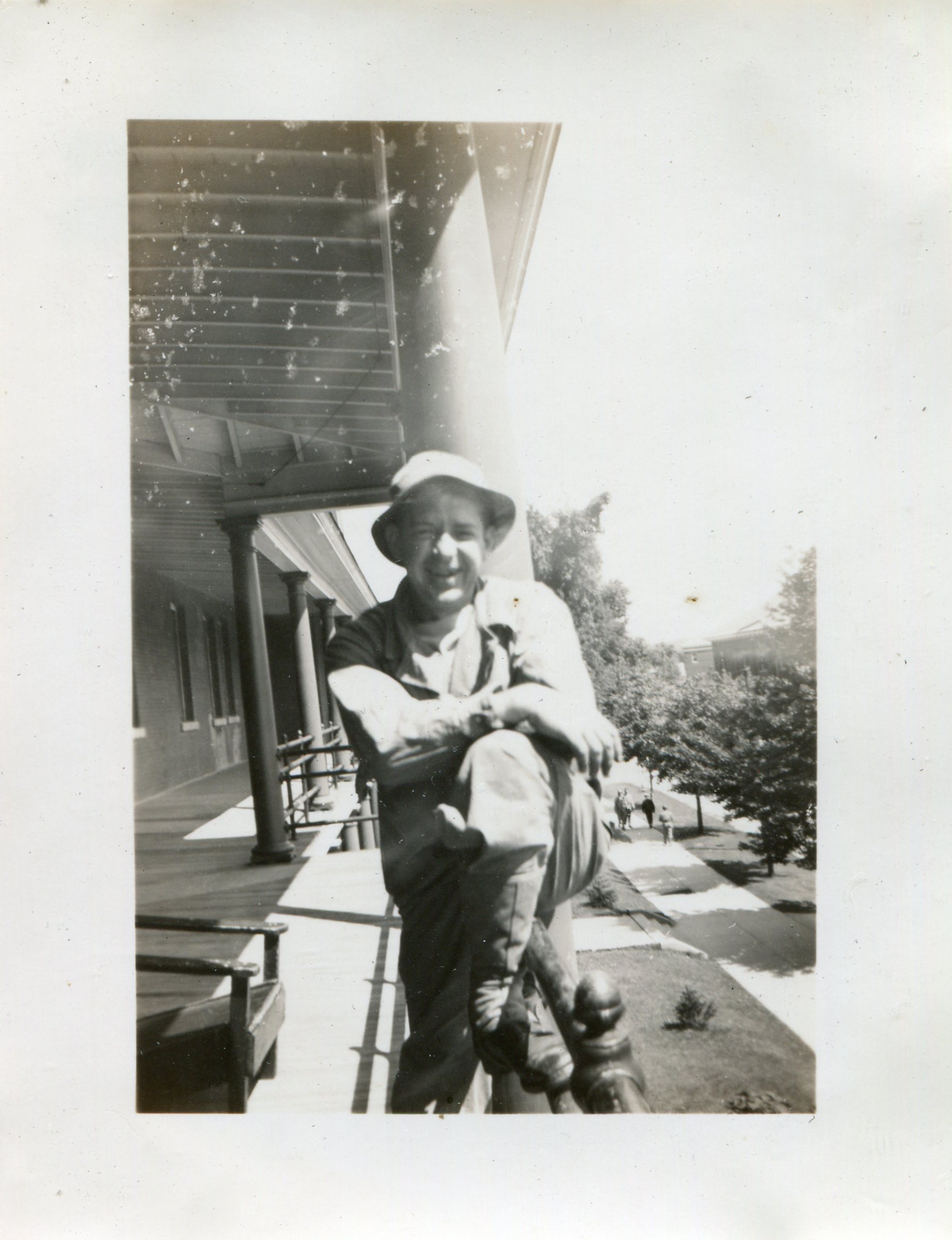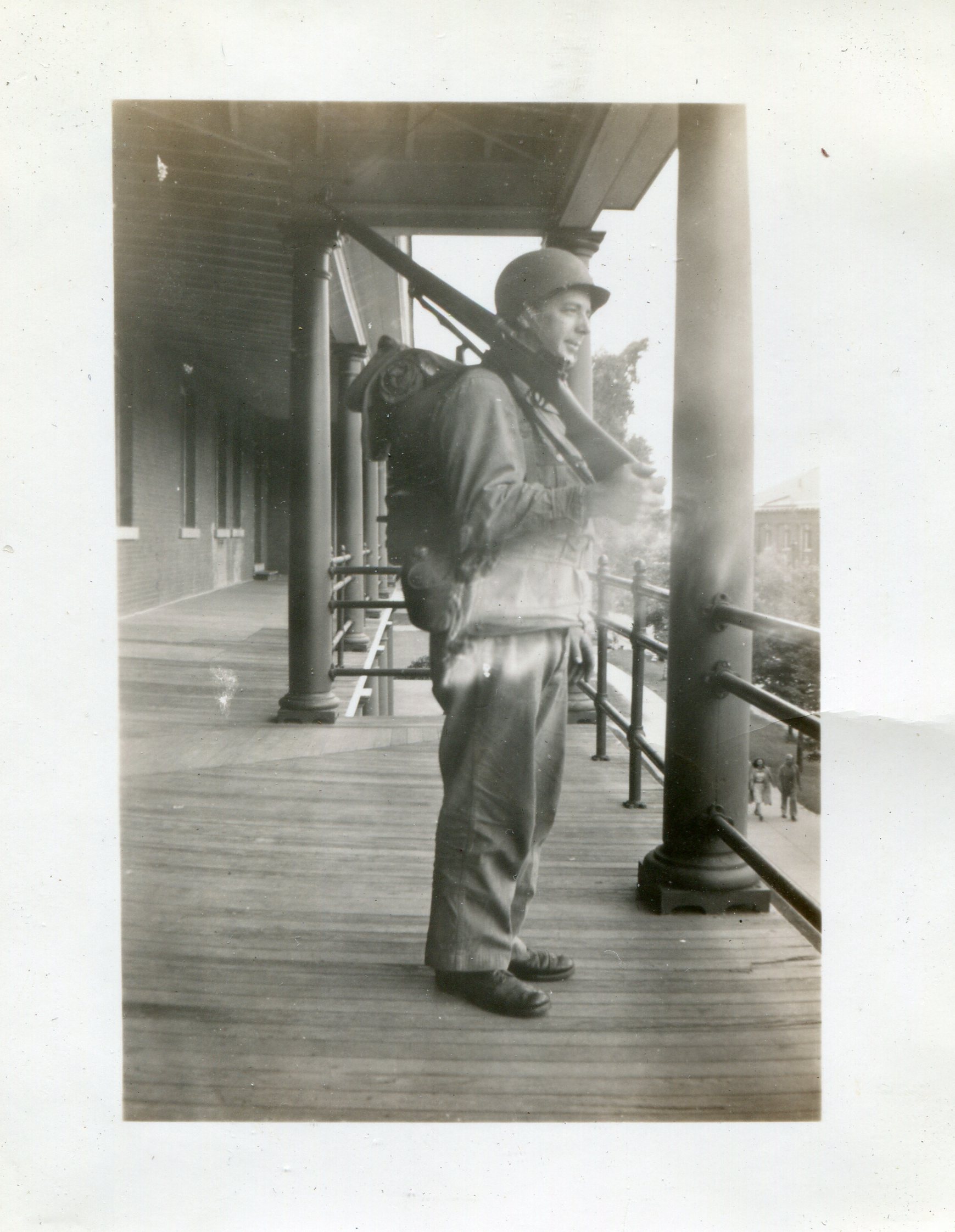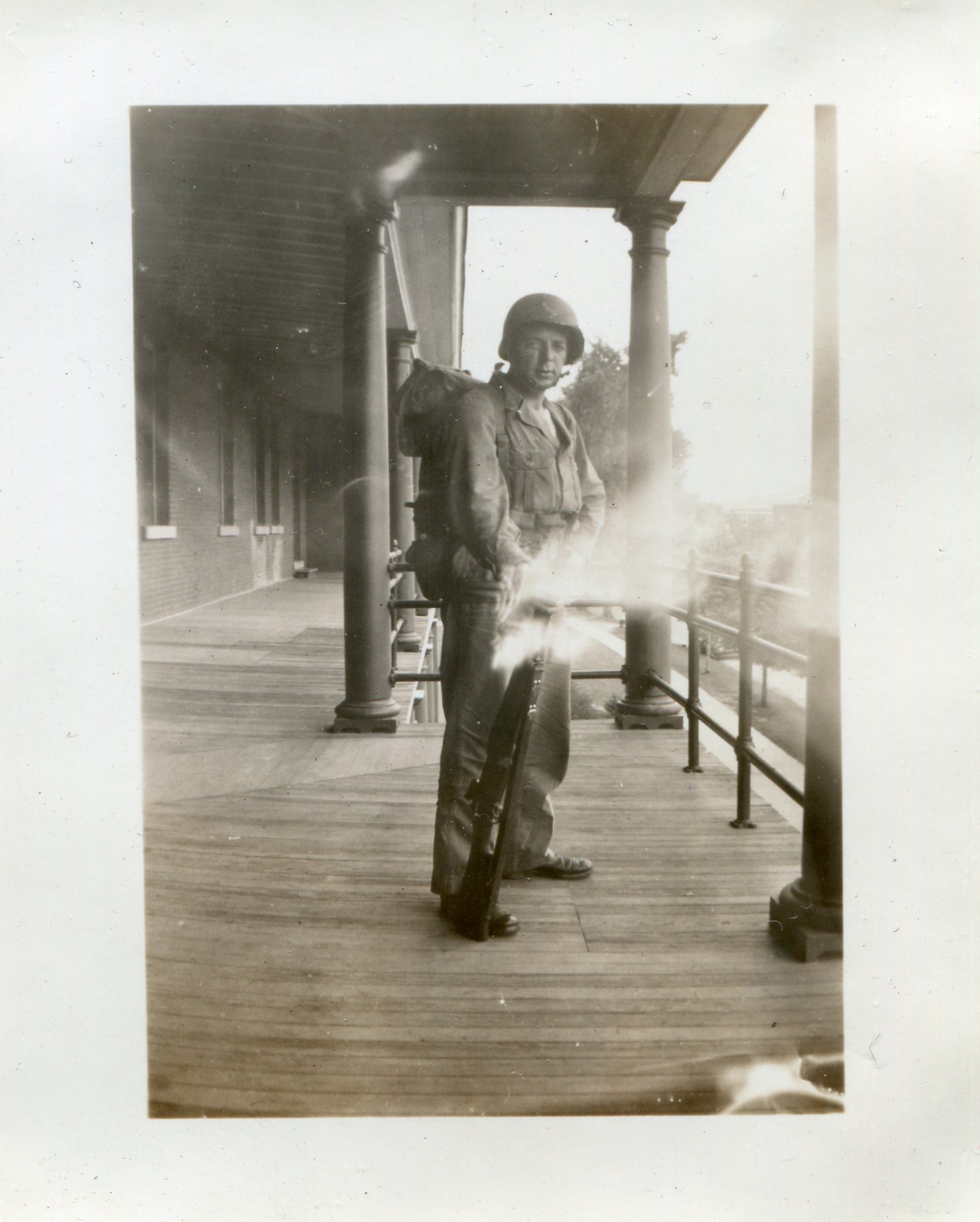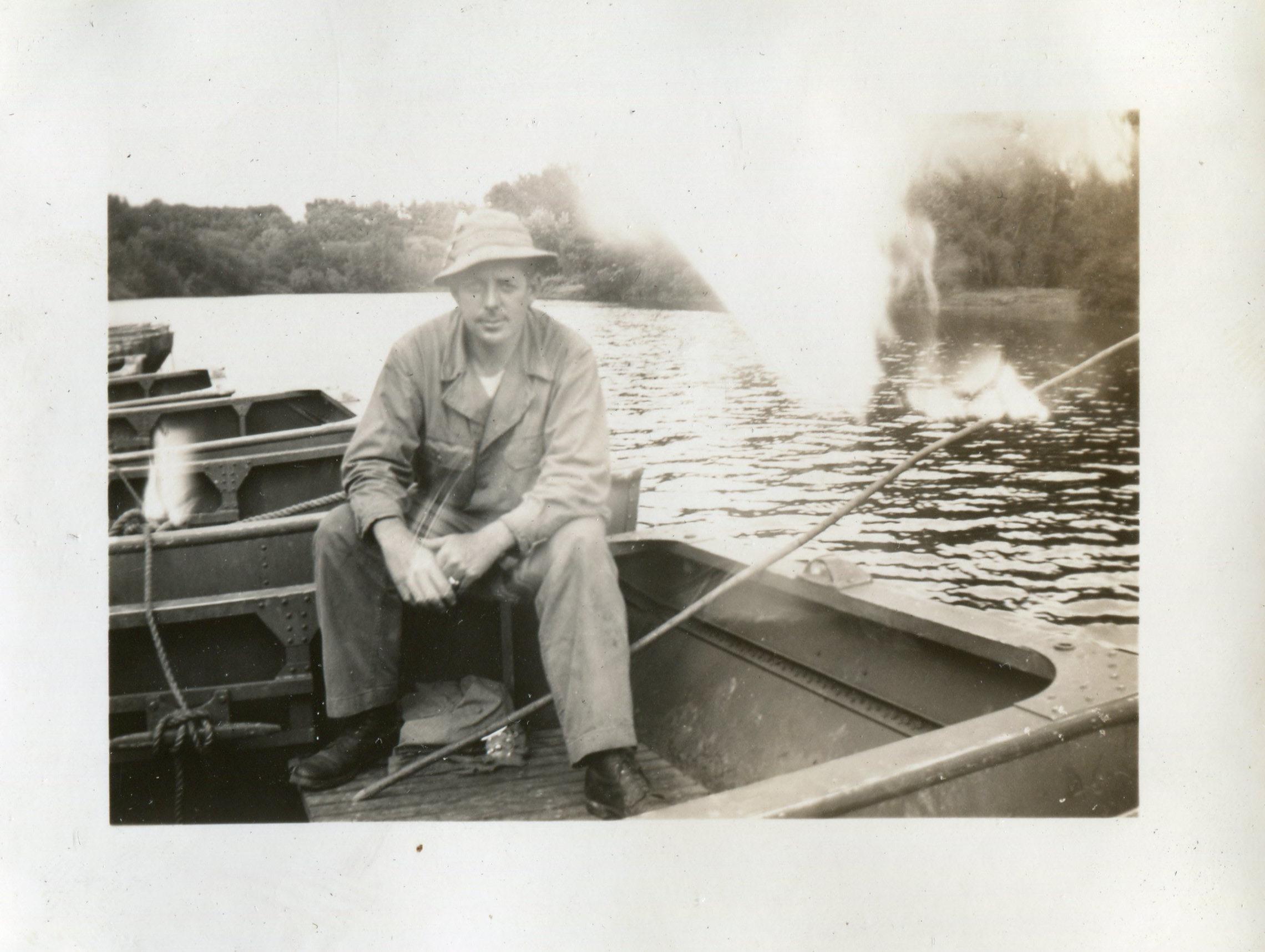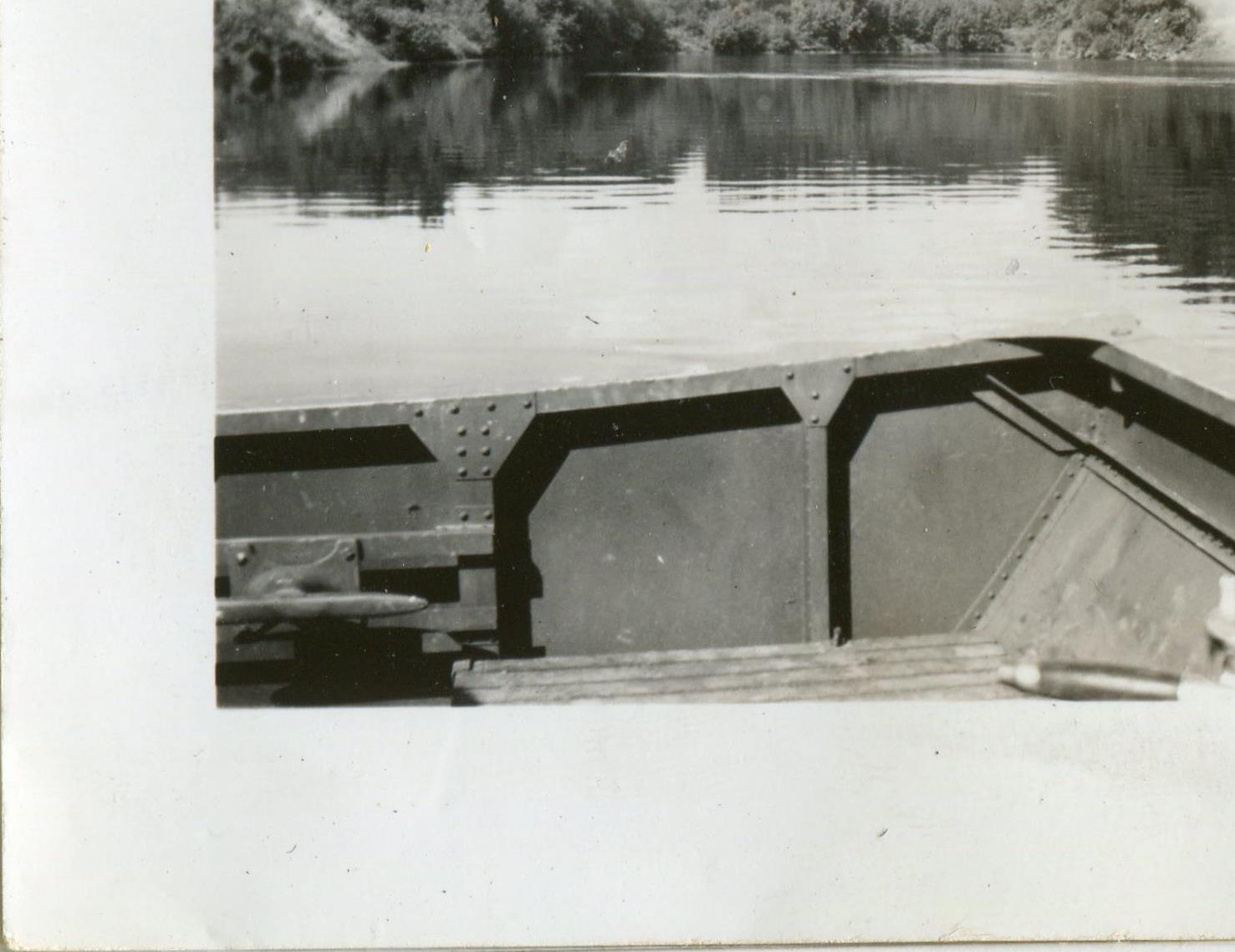Like many of the U.S. Army's Engineer Combat Battalions that were destined for Europe, the 160th went on maneuvers in middle Tennessee. My Dad was from middle Tennessee and he had traveled most of the main roads and knew quite a few people in the area. This area was picked because of its close resemblance to France, Belgium and Germany.The 160th traveled by train from Camp Ethan Allen, Vermont to Nashville, Tennessee in the fall of 1943. At Nashville they formed a convoy and Dad said they went all over Tennessee. Their first assignment was to catalogue bridges. They would drive all the roads, mapping bridge locations, inspecting them for condition and load bearing capabilities and taking pictures for the records. They would occasionally stay in squad tents. Squad tents would sleep 10 and they had a small wood burning stove but they usually stayed in pup tents. When they were someplace that didn't have a blackout they would build a bonfire. The fires were great for warming up and drying clothes but embers would sometimes come down on the canvas pup tents and make small holes in them that leaked rain. The 160th maneuvered all over the state, sometimes they would camp for as little as one day. They camped for a few weeks close to Camp Forrest by Tullahoma, they camped in the Manchester area for several weeks of training. They camped at Murfreesboro where they were able to load up in trucks and go to Nashville for R&R on weekends. They spent several weeks at Watertown where they were able to stay in a public building. They ate a lot of rations but often they would be close to a rolling kitchen that would set up close to large concentrations of men and serve hot meals. They had little contact with civilians when they were on maneuvers and they did not eat any food that didn't come from the U.S.Army, except when they were on R&R. The 160th learned to build bridges and roads and to be sufficient with what they carried. They learned to shoot .30 cal and .50 cal machine guns but mostly they toughened up and got used to the cold and the living outdoors. Dad said he thought that conditions on the Tennessee maneuvers were harsher than when they were trying to get across the Rhine. Except that in Tennessee they weren't taking enemy fire.The 160th left Tennessee in the spring and convoyed to Camp Rucker, Alabama. These are a few pictures taken on those maneuvers.
Men in the first picture, top row left to right:
Yewey W. Lambert,Pfc. Trenton, Fla.
Roby D. Turner, Tec5 Royboro, N.C.
John F. Terry, Sgt. Rural Hall, N.C.
Joseph W. Bolek,Sgt. Hammond, Ind.
Chester P. Rydelski, Pfc. Erie, Penn.
Bottom row, left to right:
Ralph L. Smith,Pfc. Chambersburg, Penn.
Dale E. Miller,Pfc. Pleasantville, Ohio
Harry A. Cannon,Sgt. Nzssa, Ore.
Joseph P. Seuss,Pvt. Pittsburg, Penn.
Paul J. De Micheal, Pfc. Louisville, Ky
Wymer ( Dad sure of this last name, no other information)
Second picture, B Company camp on maneuvers in Tennessee.
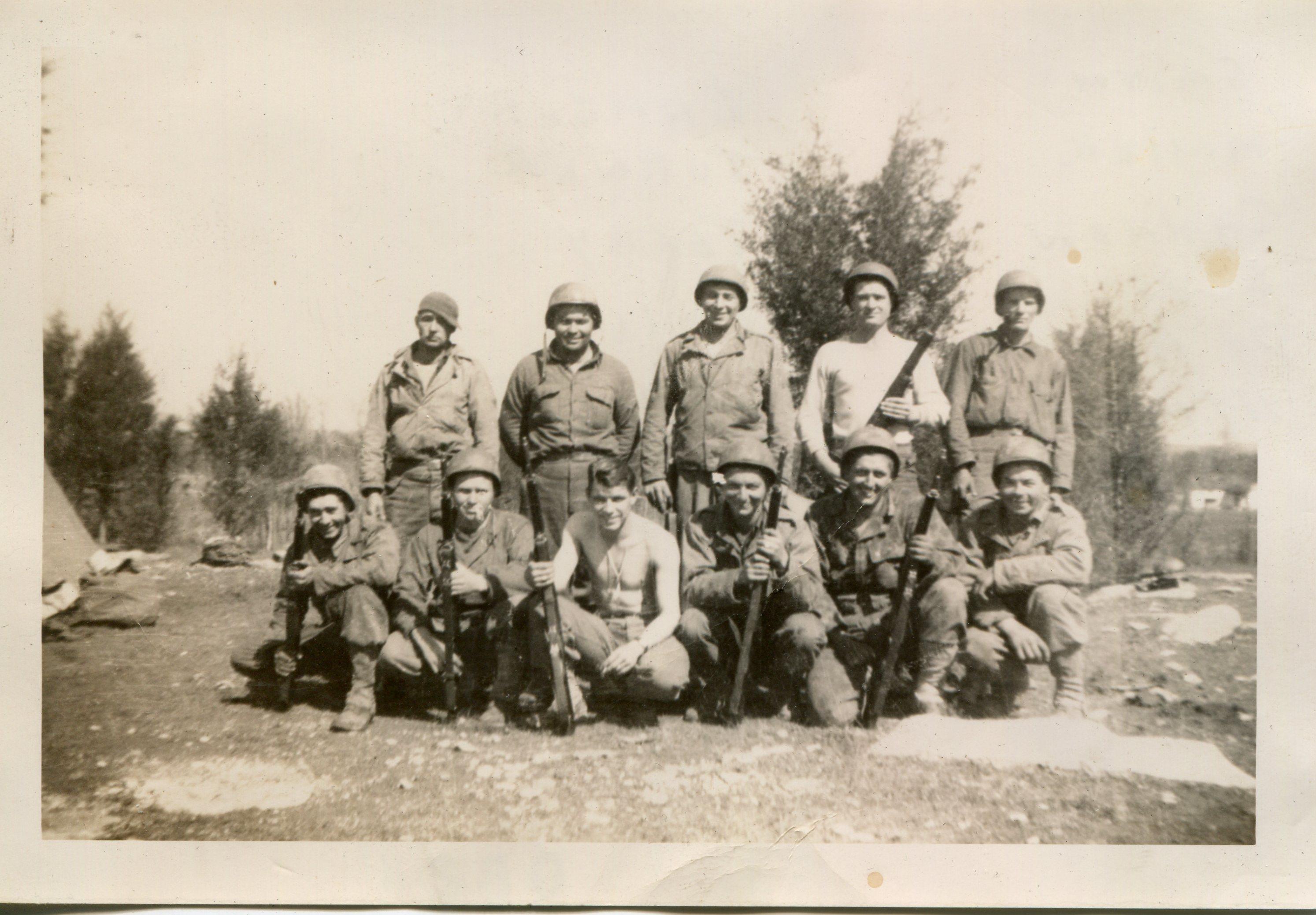
.jpg.e90737a4e642bd98ecd734b5152178da.jpg)
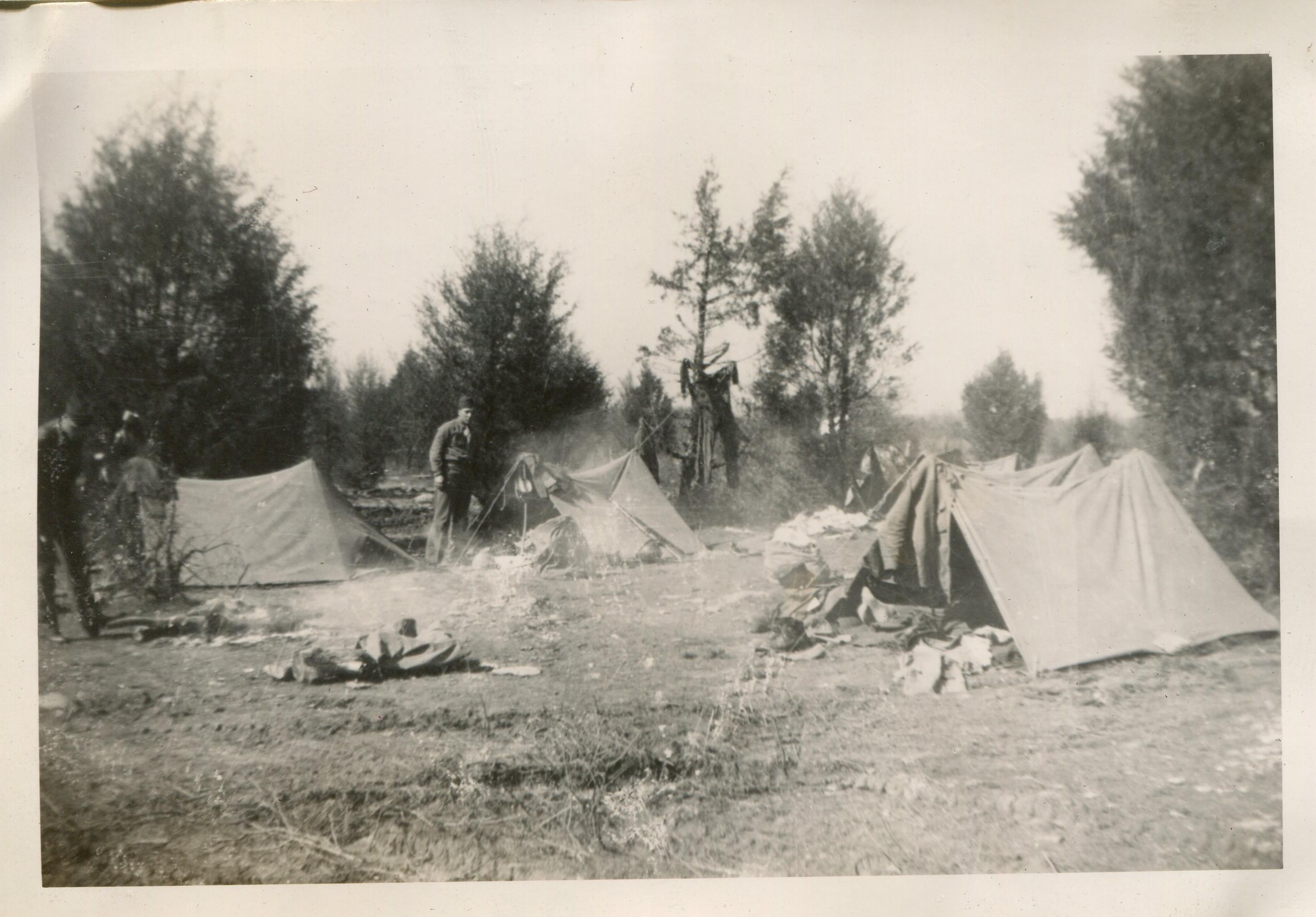
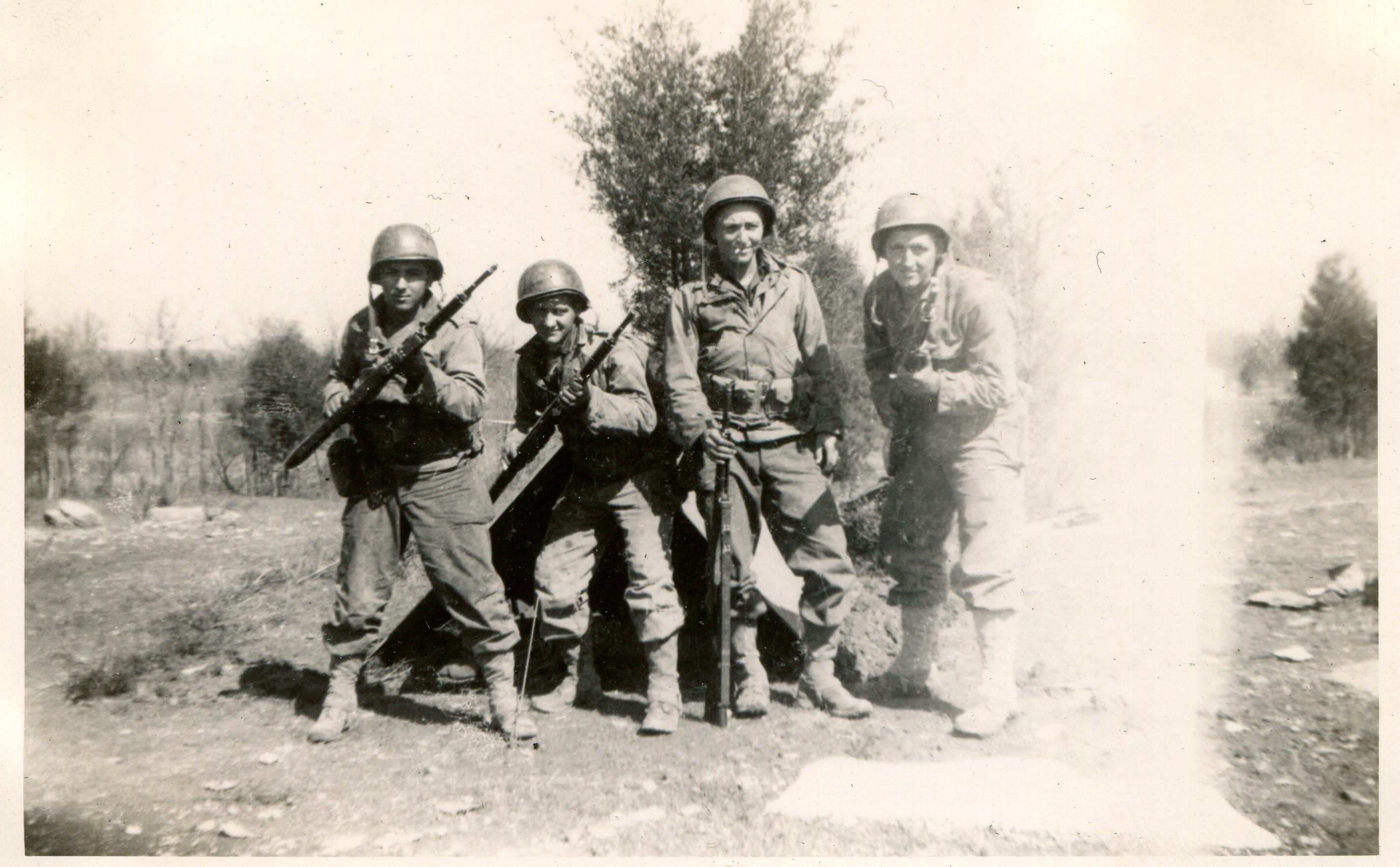
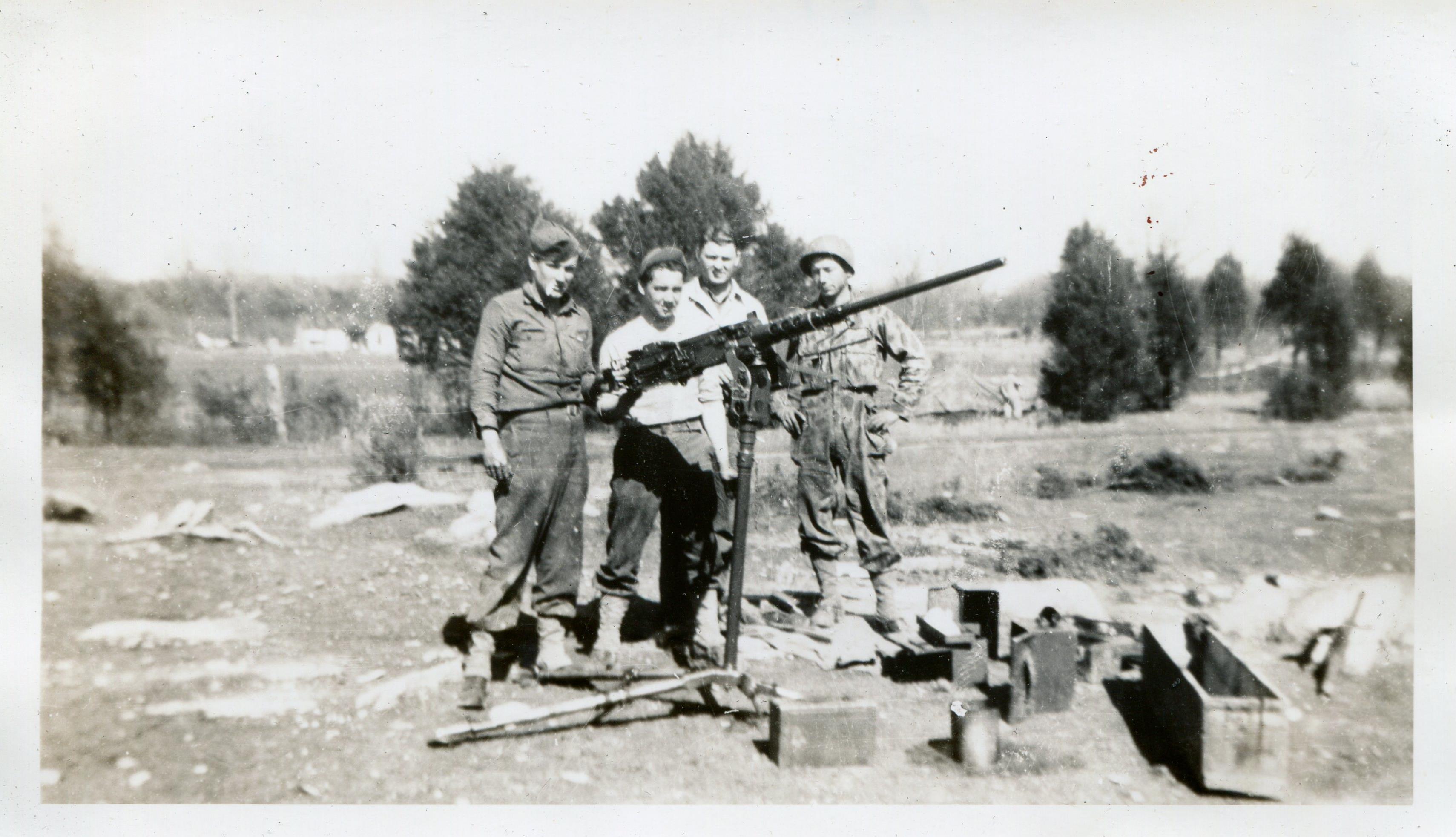
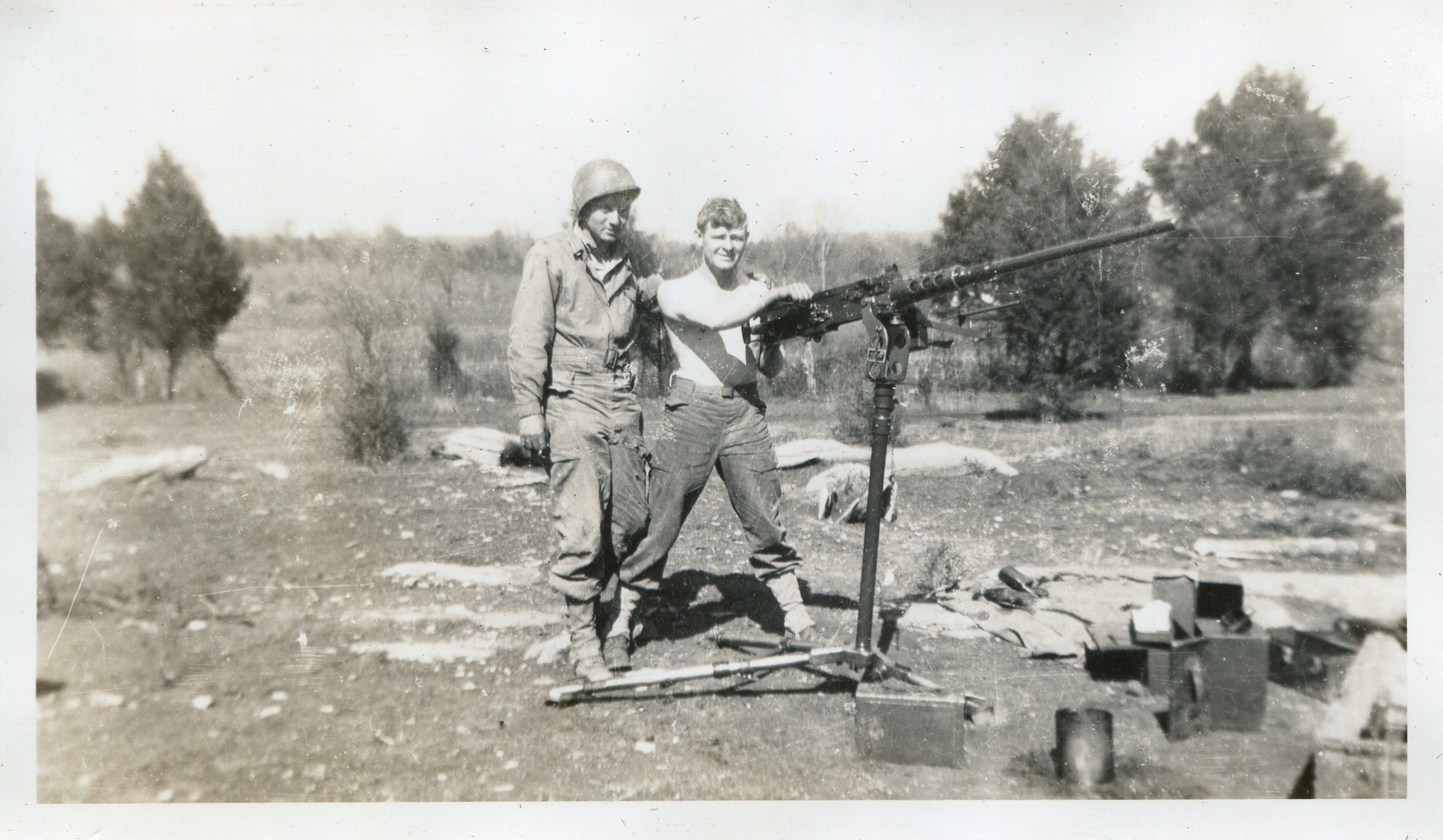
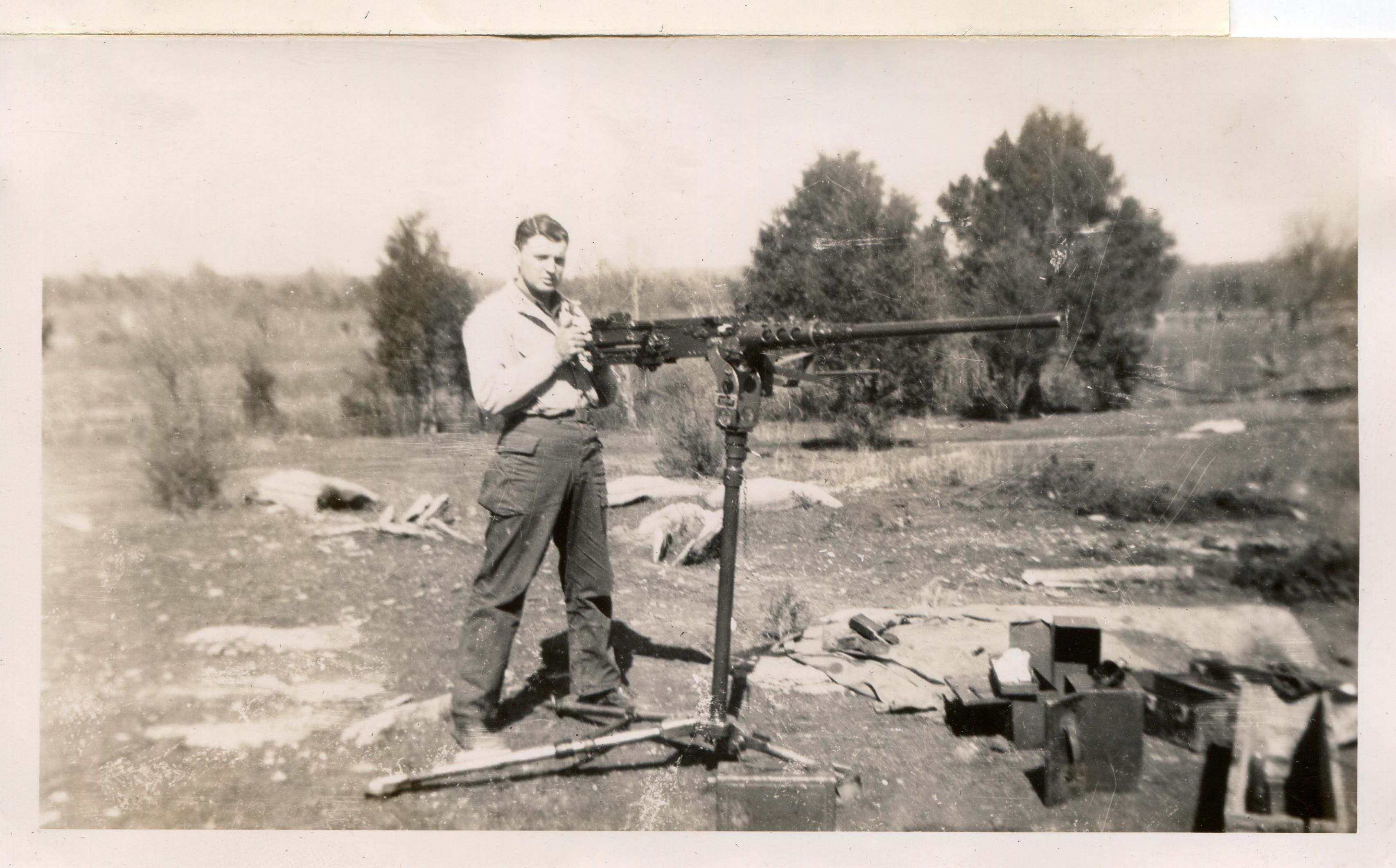
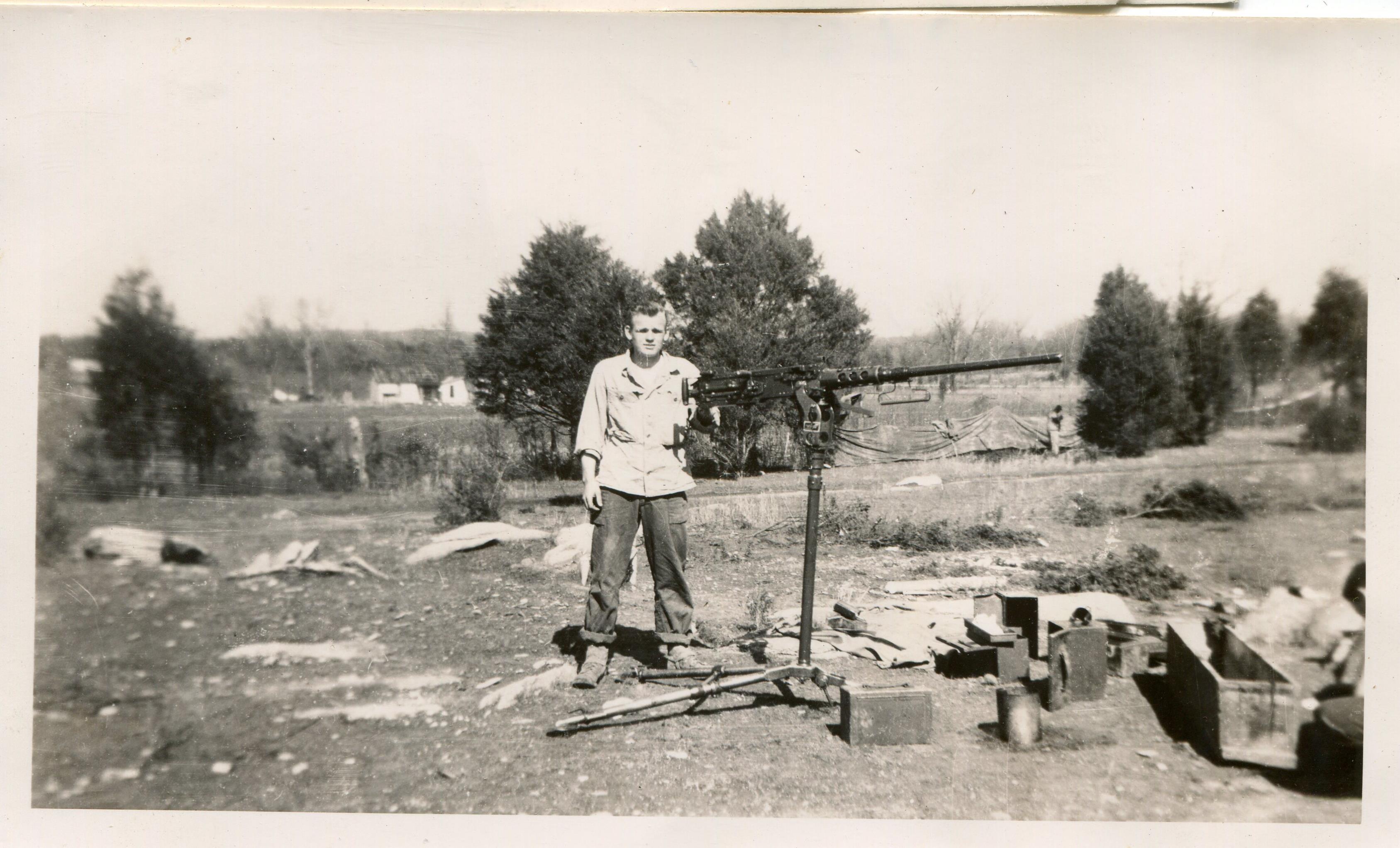
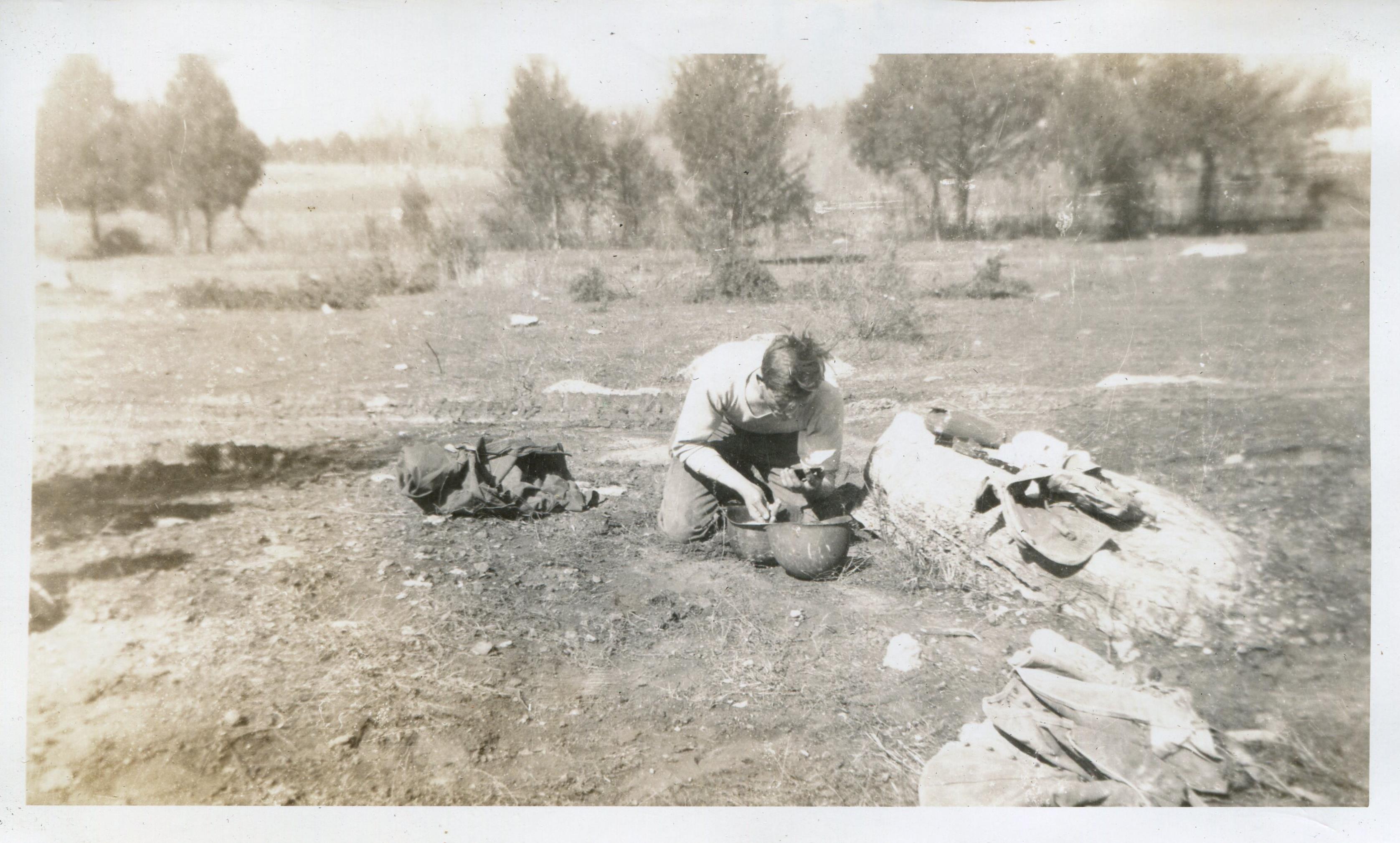
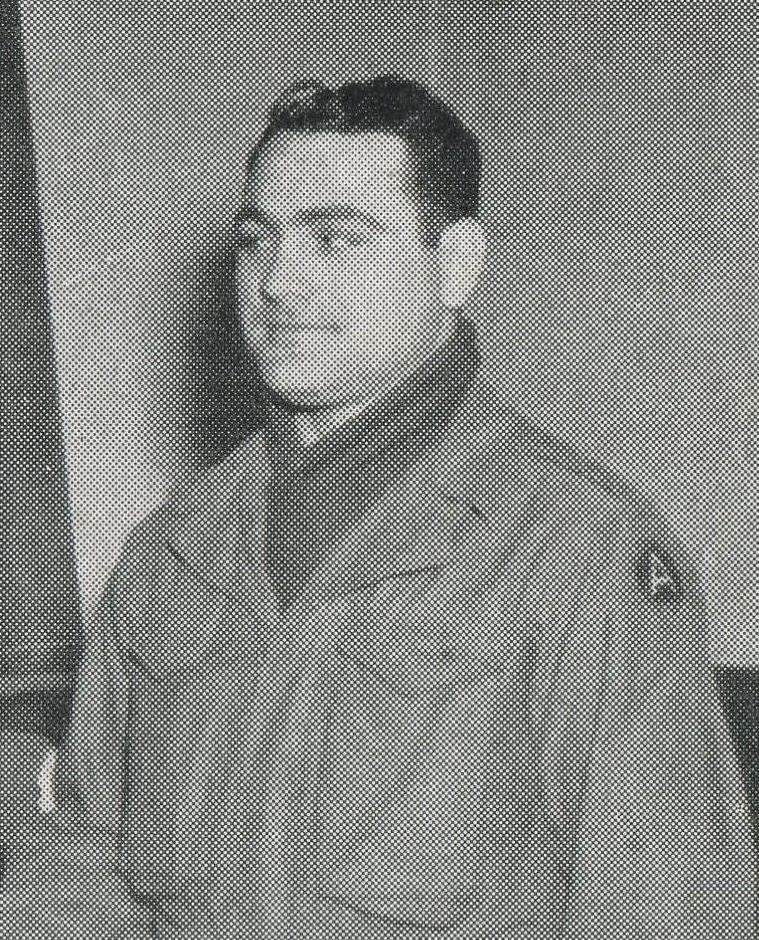
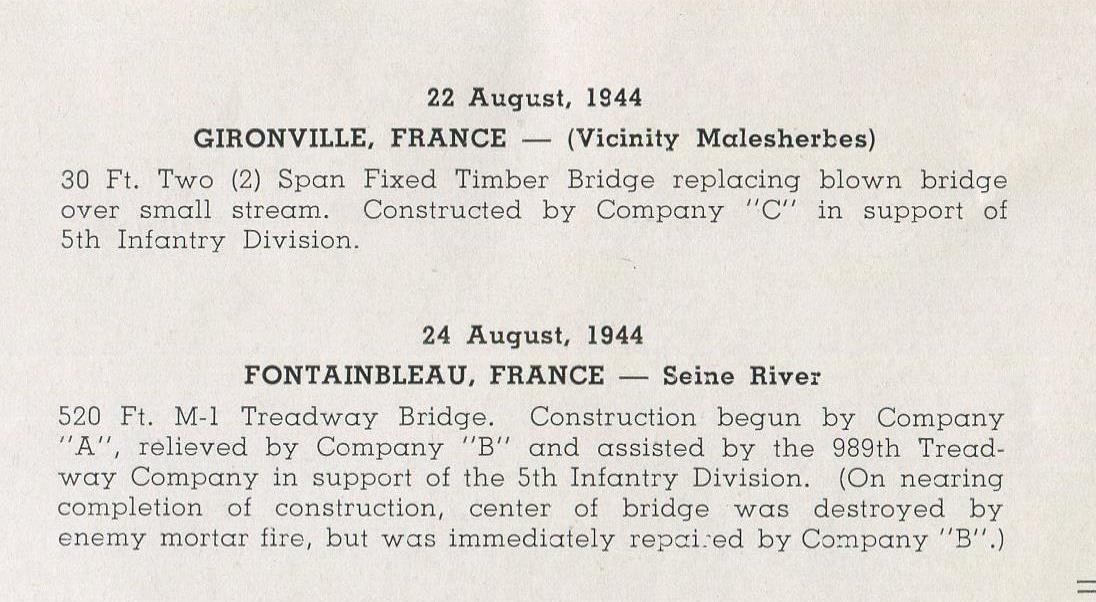
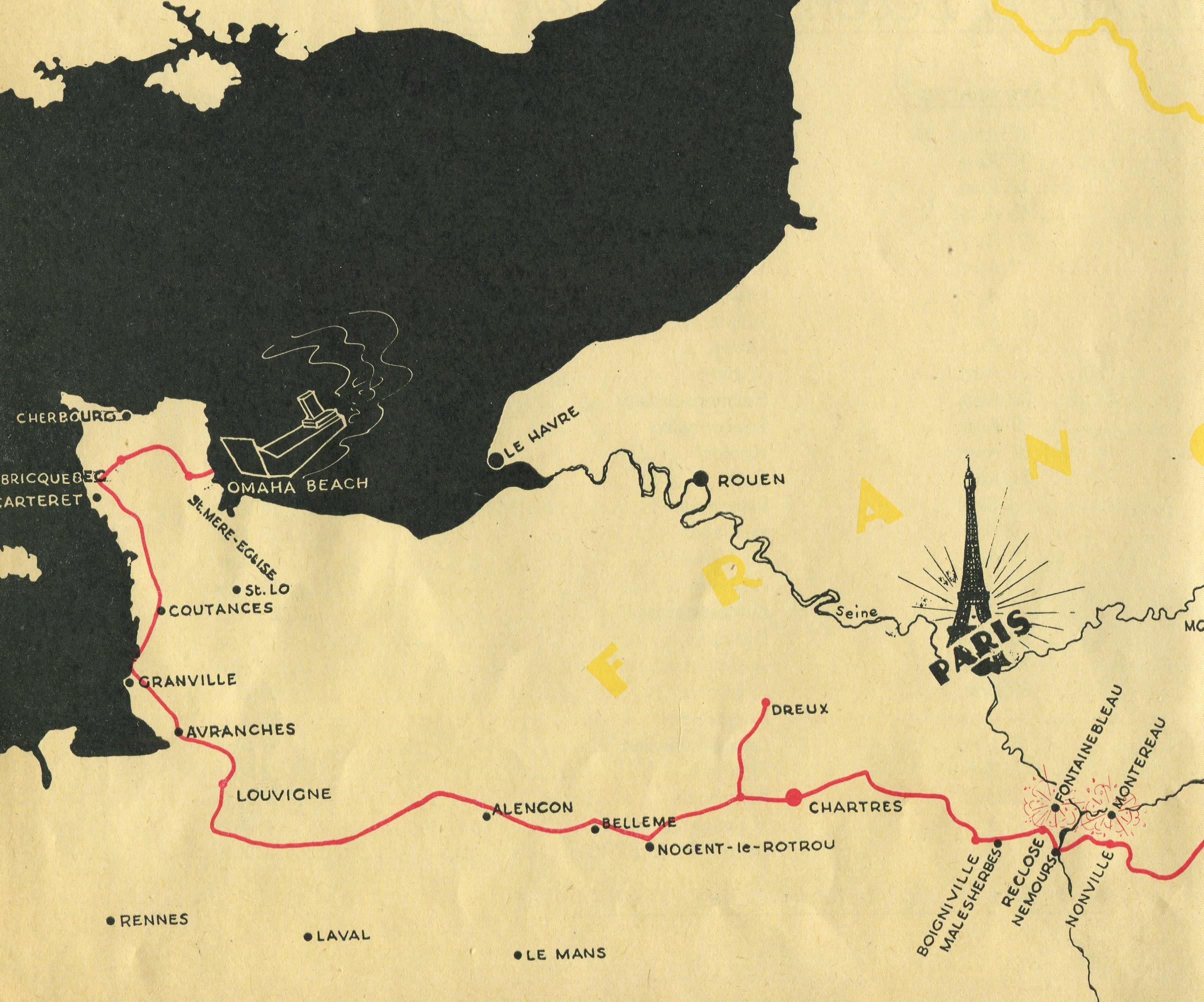

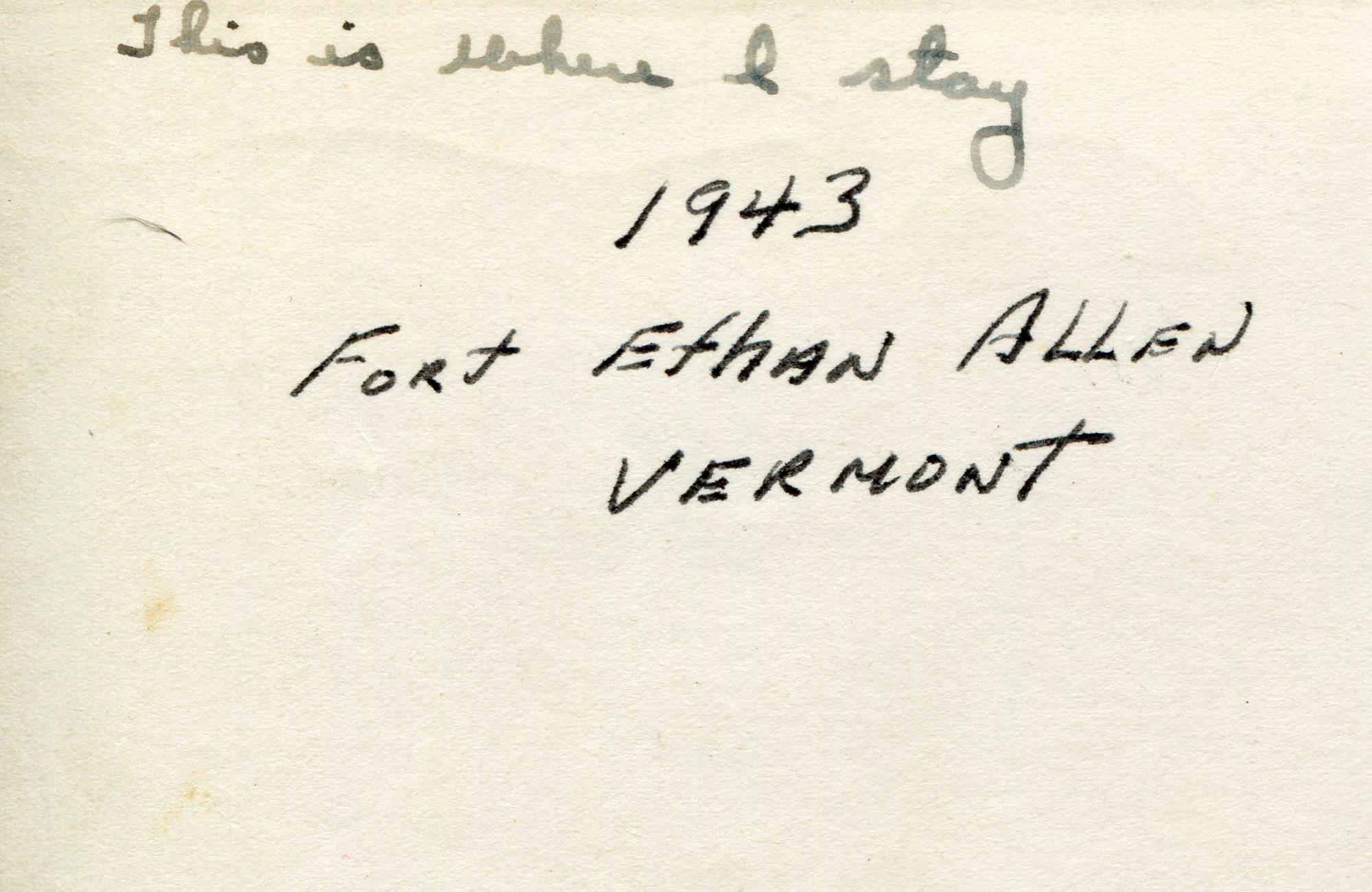
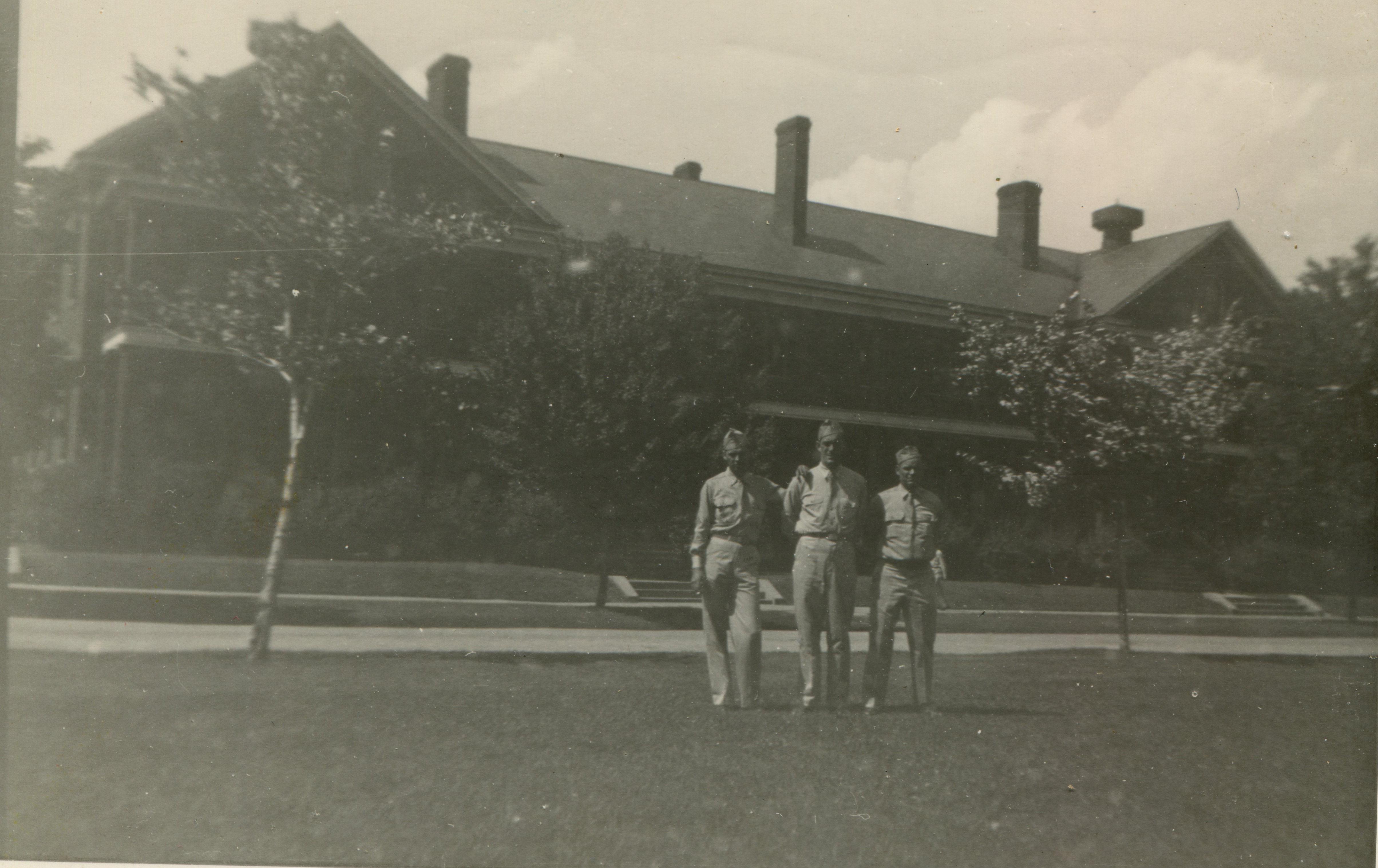
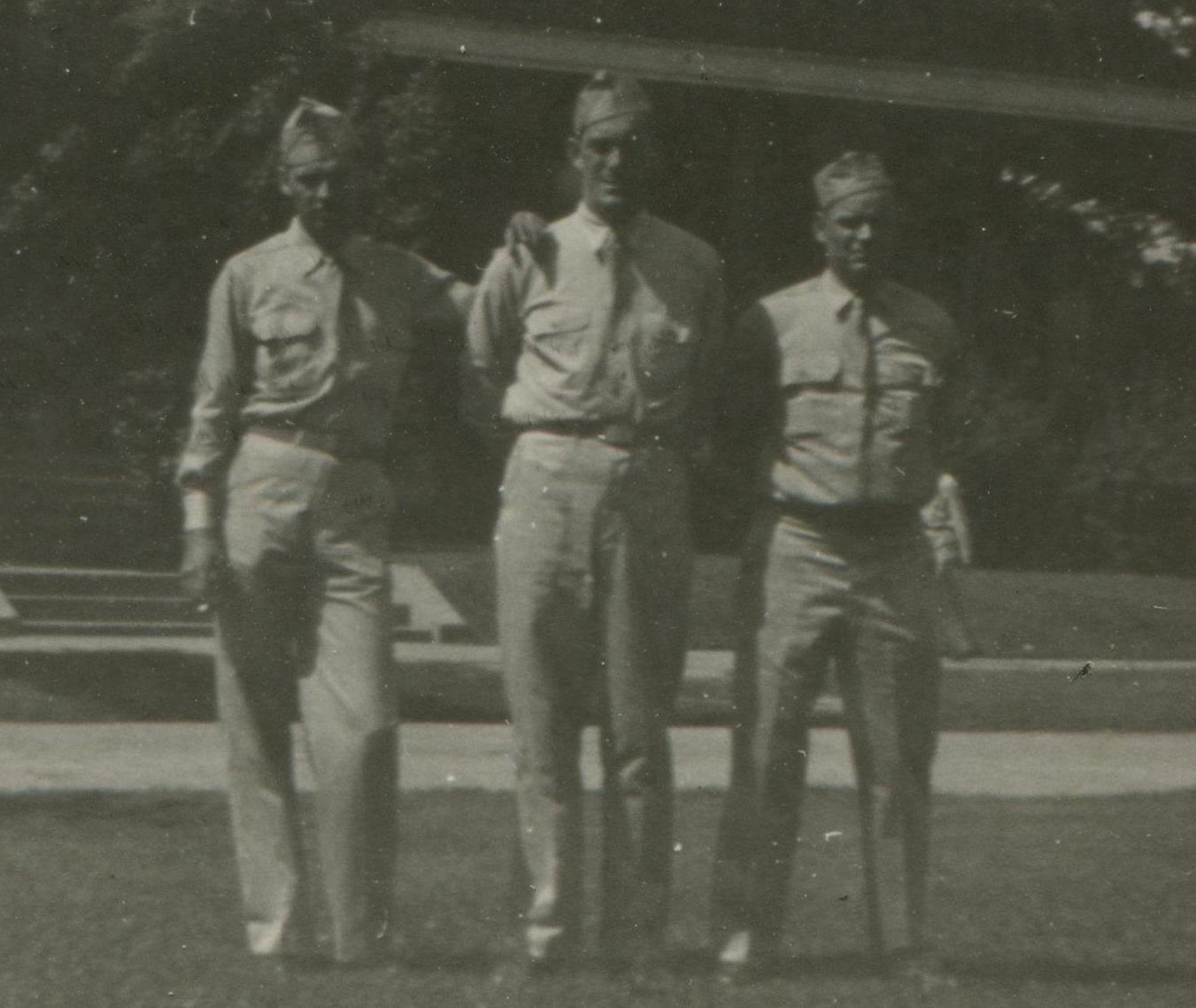
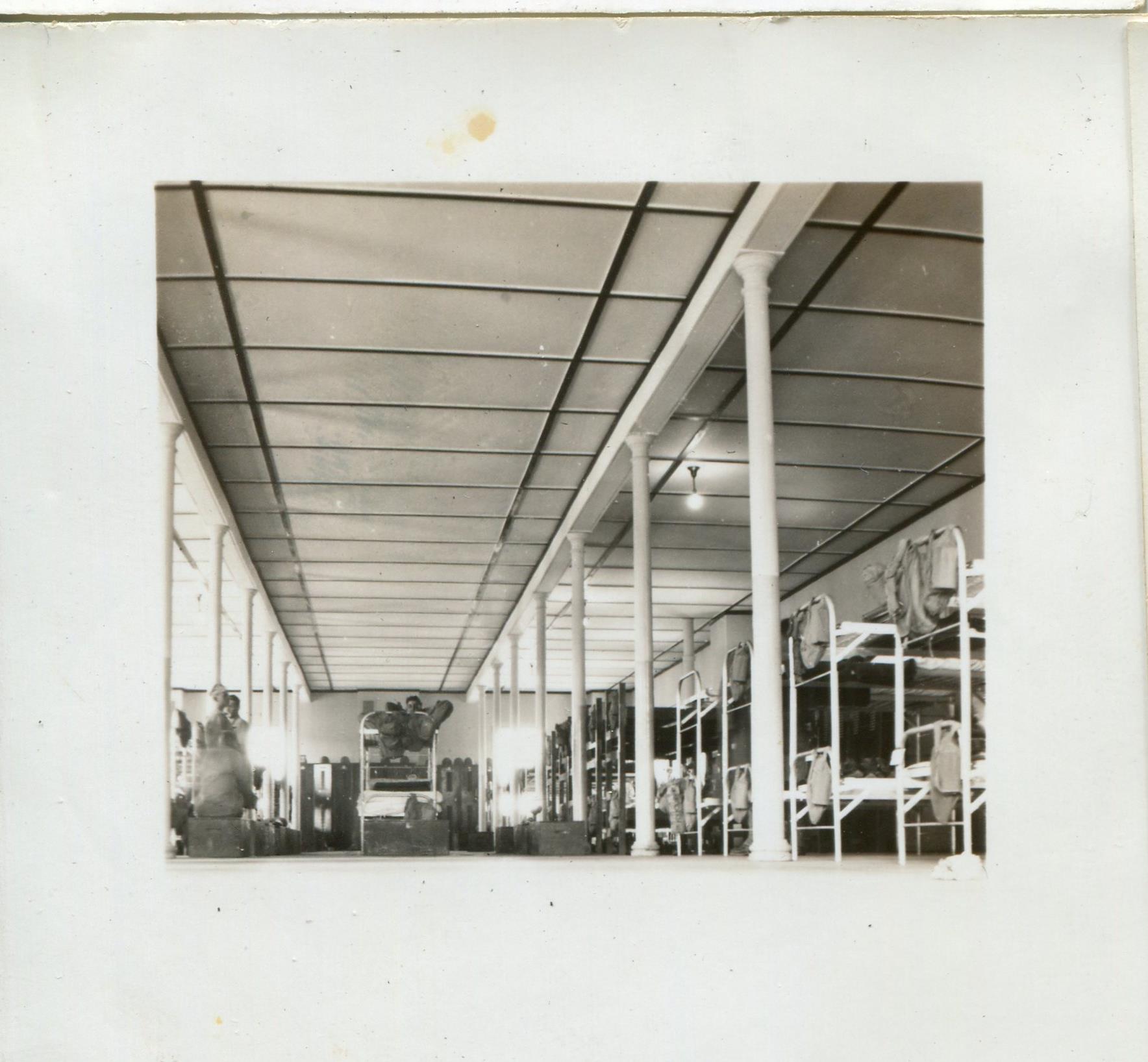
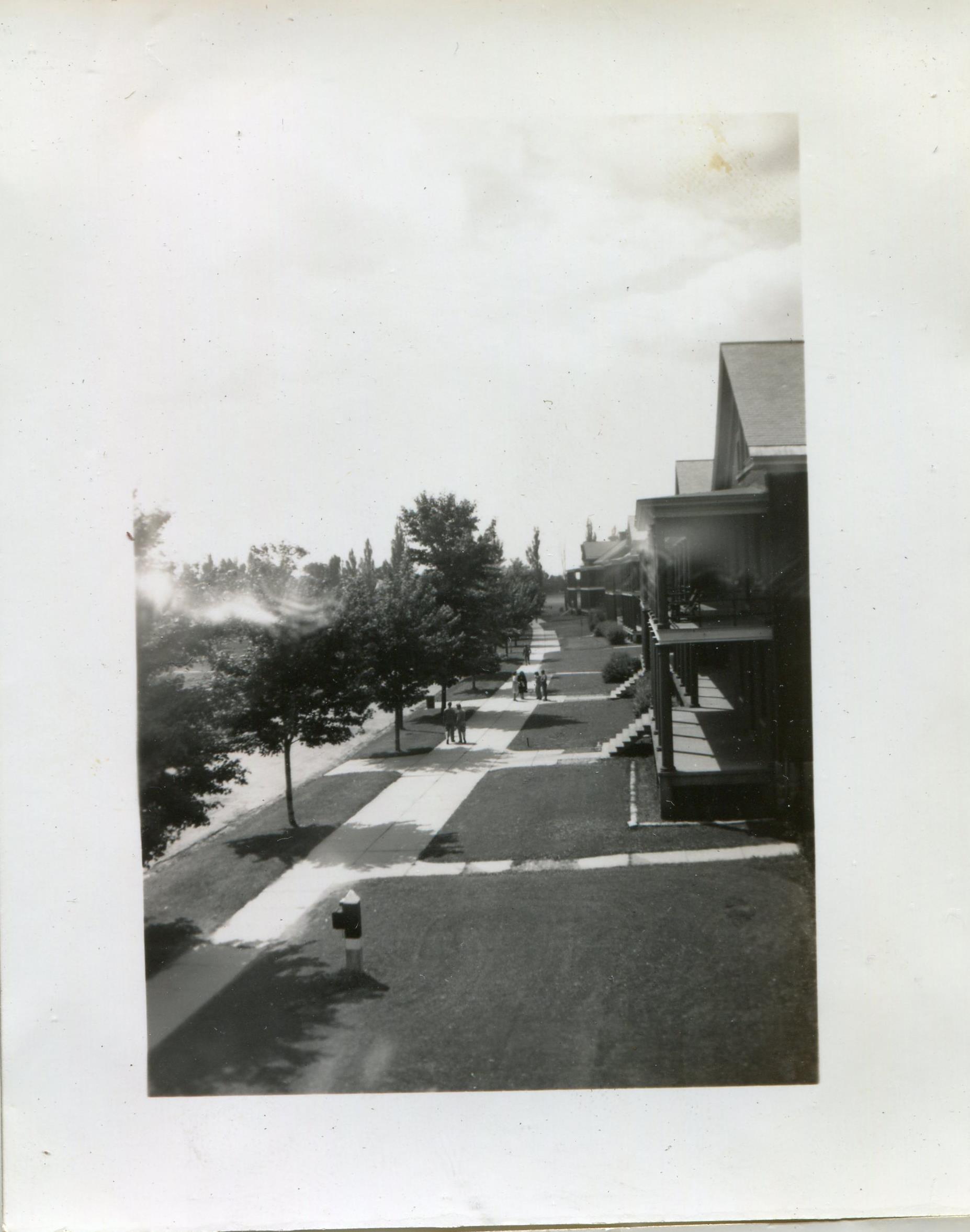
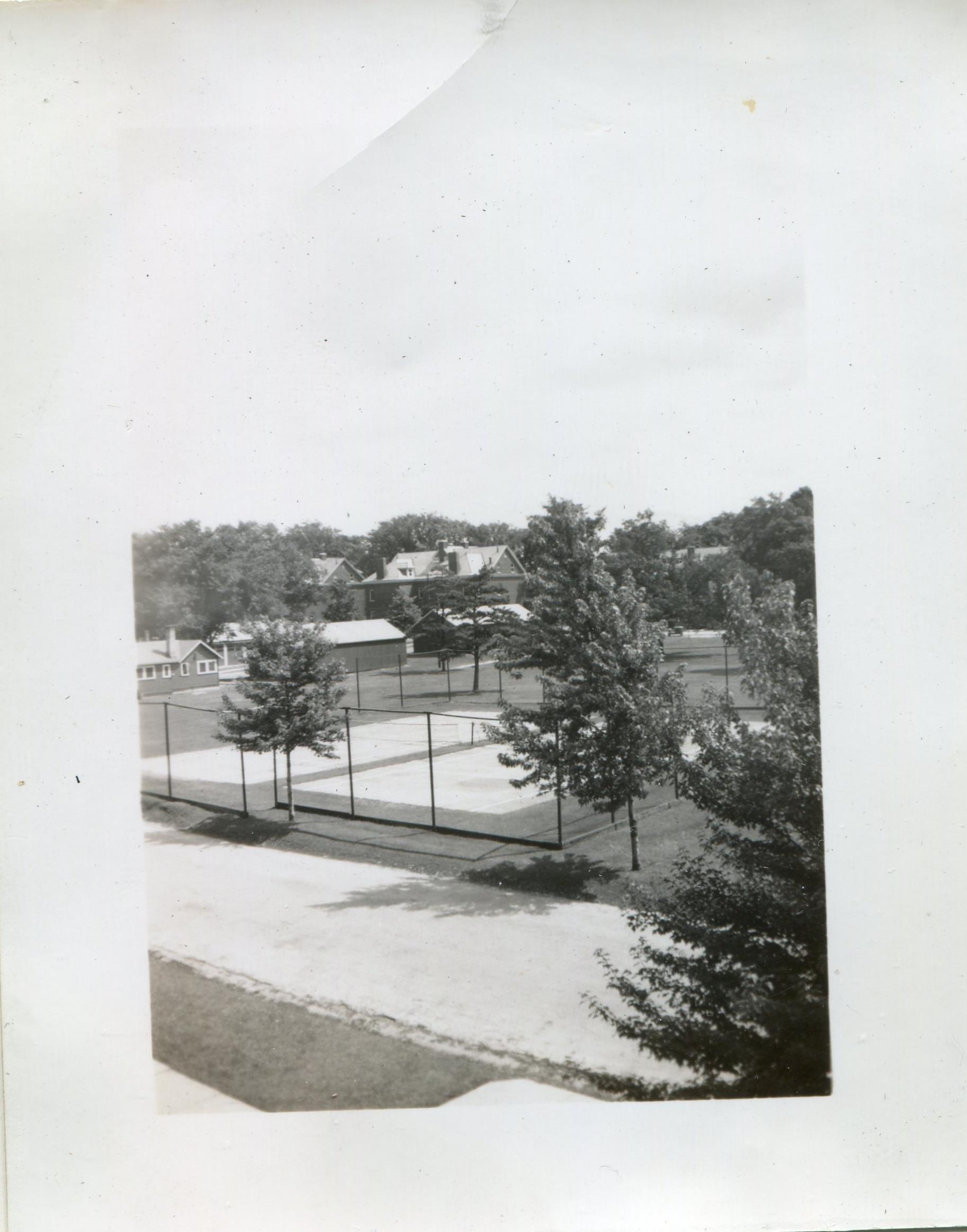
.jpg.4c621ef597c5a5d4cf50fd65ab6c803d.jpg)
.jpg.d7f4d373632161a6df00a5c5b1fc005b.jpg)
.jpg.b55b192db565a1fb0864f025fee23132.jpg)
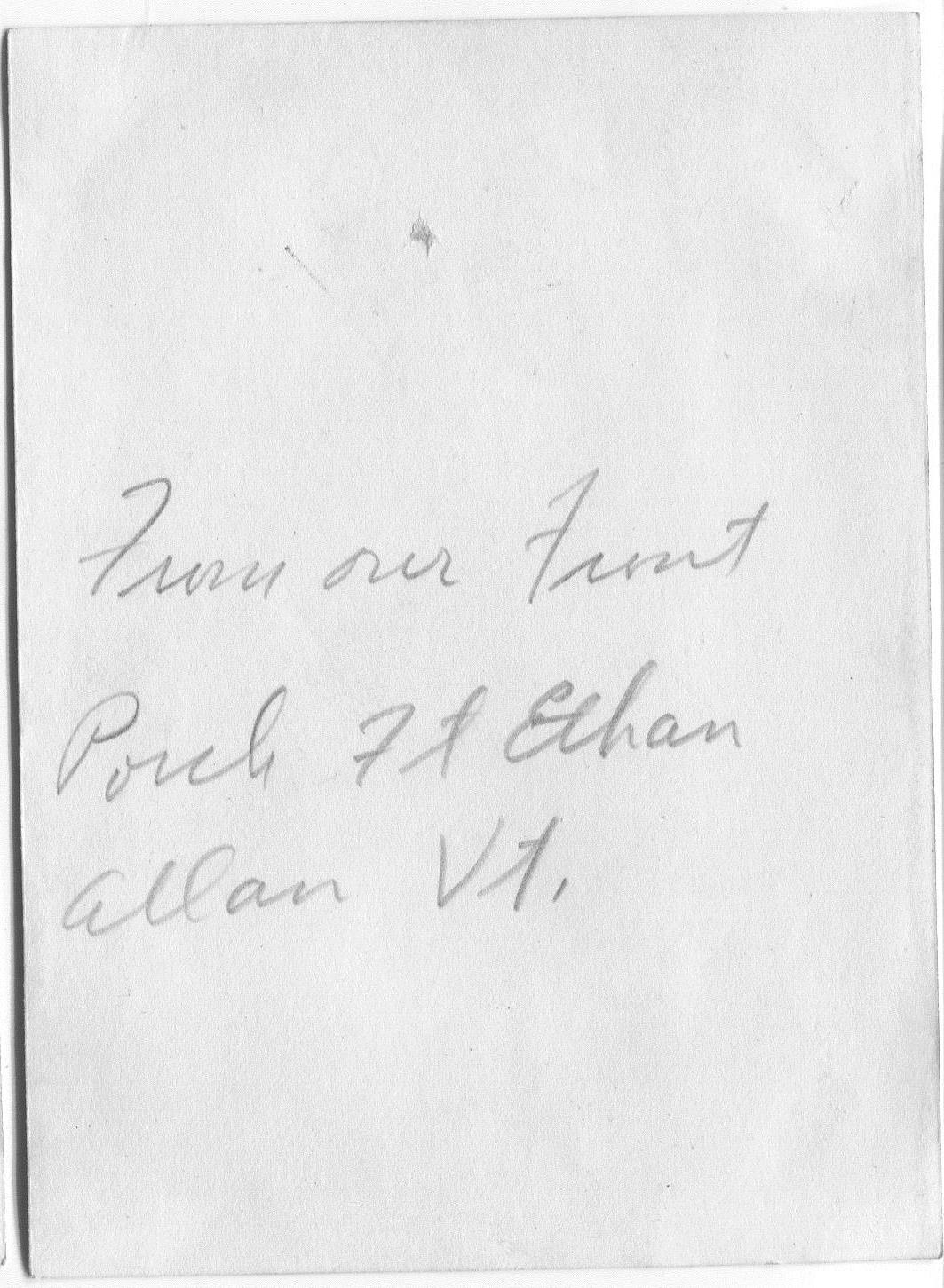
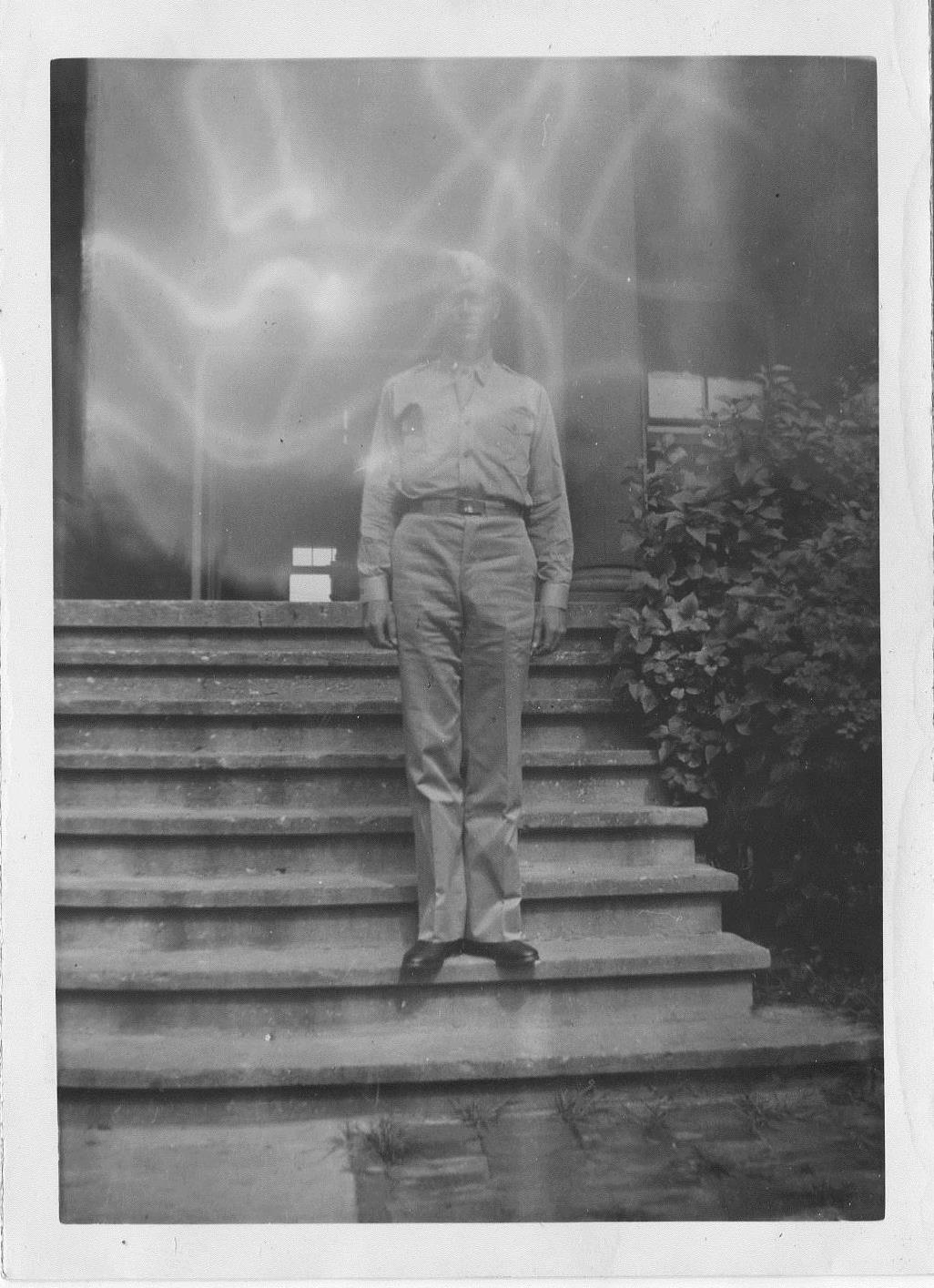
.jpg.0c4501a716cfba6e481fd76d39edd71e.jpg)
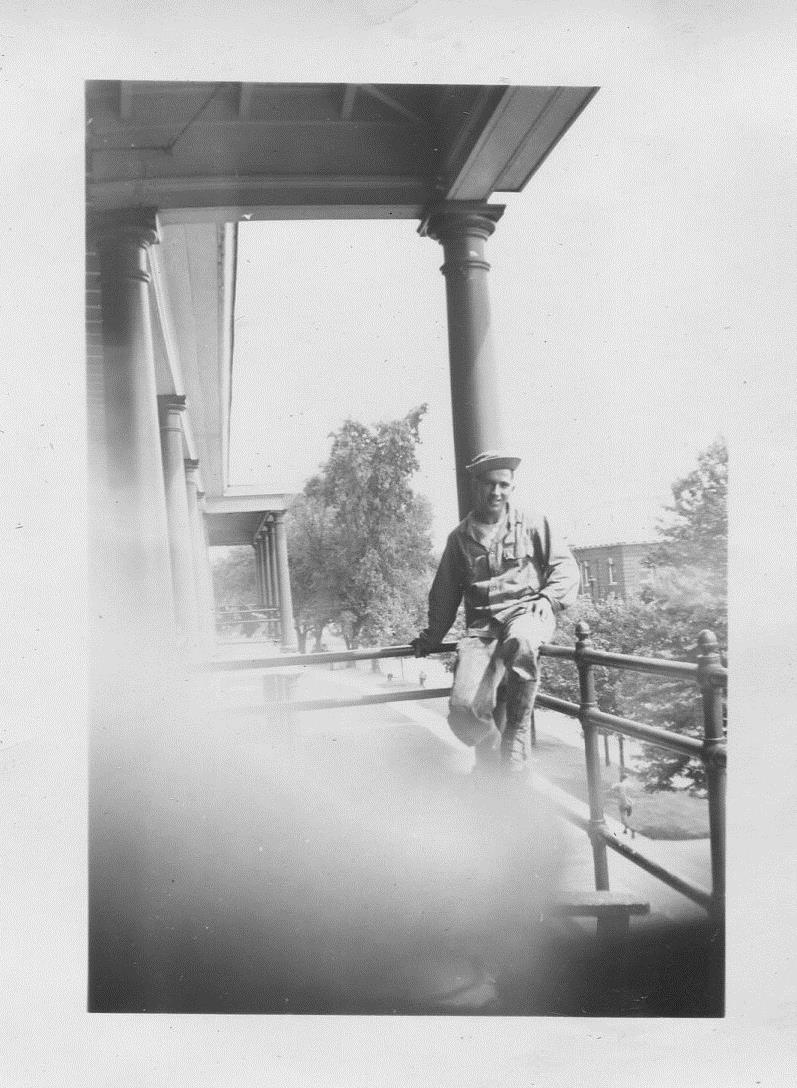
.jpg.c32fd7f2eb9e57b1df35fcc4a4520e53.jpg)
.jpg.a4032c3102bf9694b51171fa110a72ab.jpg)
